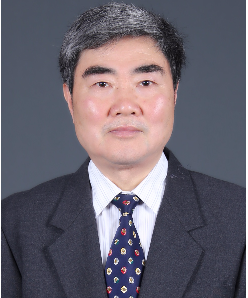Selected Papers from 10th International Conference on Vortex Flow Mechanics
A special issue of Aerospace (ISSN 2226-4310). This special issue belongs to the section "Aeronautics".
Deadline for manuscript submissions: closed (15 April 2024) | Viewed by 2979
Special Issue Editors
Interests: aircraft environmental control; avionics cooling; thermal control; aircraft air conditioning; boiling heat transfer; condensing heat transfer; flow resistance
Interests: numerical thermodynamics and fluid mechanics; heat and masstransfer; mixture; turbulencetheory
Interests: flashing spray and dynamic spray cooling; internal flow of nozzles and micro-tubes; spray simulation and droplet evaporation; thermal loads of hypersonic vehicles
Special Issue Information
Dear Colleagues,
The 10th International Conference on Vortex Flow Mechanics (ICVFM 2023) will be held on 16–19 October 2023 at Nanjing University of Aeronautics and Astronautics, Nanjing, China. The conference will be held onsite and online.
ICVFM 2023 is the tenth conference in a series of successful meetings commenced in Kobe in 1999 and continued in Istanbul (2001), Yokohama (2005), Daejeon (2008), San Leucio (2010), Nagoya (2014), Rostock (2016), Xi’an (2018), and Patras (2021). The purpose of ICVFM 2023 is to provide a communication platform for international researchers, engineers, and practitioners in the field of vortex physics, vortex modeling, and other fluid applications.
Aerospace is cooperating with ICVFM 2023. Authors of outstanding papers related to aerospace presented at the conference are invited to submit extended versions of their work to this Special Issue for publication. We are seeking manuscripts that report new research in the field of aerospace on, but not limited to, the following:
- Turbulent flow;
- Multiphase flow;
- Reacting flow;
- Free-shear flow;
- Stratified flow;
- Bio-inspired fluid mechanics;
- Computation fluid mechanics;
- Flow measurements;
- Flow control;
- Turbomachinery;
- Aeroacoustics;
- Aerodynamic design optimization;
- Flow-induced vibration;
- Scientific visualization methods;
- Vortex dynamics.
Prof. Dr. Xiande Fang
Prof. Dr. Nikolai Kornev
Prof. Dr. Zhifu Zhou
Prof. Dr. Yevhenii Shkvar
Guest Editors
Manuscript Submission Information
Manuscripts should be submitted online at www.mdpi.com by registering and logging in to this website. Once you are registered, click here to go to the submission form. Manuscripts can be submitted until the deadline. All submissions that pass pre-check are peer-reviewed. Accepted papers will be published continuously in the journal (as soon as accepted) and will be listed together on the special issue website. Research articles, review articles as well as short communications are invited. For planned papers, a title and short abstract (about 100 words) can be sent to the Editorial Office for announcement on this website.
Submitted manuscripts should not have been published previously, nor be under consideration for publication elsewhere (except conference proceedings papers). All manuscripts are thoroughly refereed through a single-blind peer-review process. A guide for authors and other relevant information for submission of manuscripts is available on the Instructions for Authors page. Aerospace is an international peer-reviewed open access monthly journal published by MDPI.
Please visit the Instructions for Authors page before submitting a manuscript. The Article Processing Charge (APC) for publication in this open access journal is 2400 CHF (Swiss Francs). Submitted papers should be well formatted and use good English. Authors may use MDPI's English editing service prior to publication or during author revisions.








